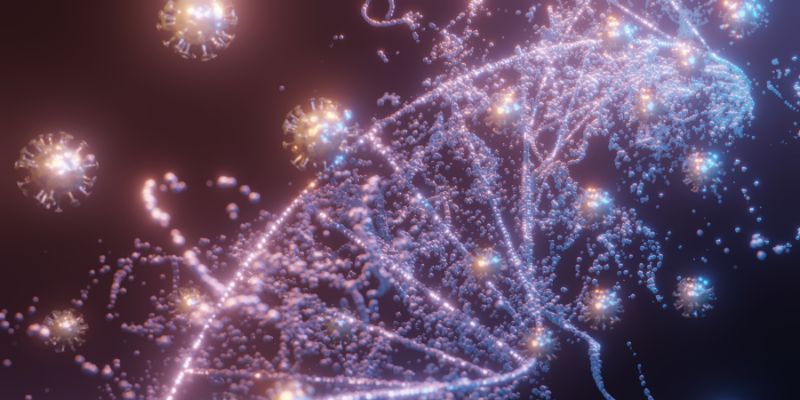Introduction
The term Genetic engineering is basically modification or alteration of the DNA in an organism’s genome. Every organism is made up of cells and the new cells can grow only with the help of existing cells. This modification in genes handles the inherited material of a living specie. Researchers take the DNA from a plant or creature and addition it into the DNA of another specie (Daniell, and Chang, 2016). The process generally makes it conceivable to make more grounded plants, more beneficial creatures, and diminish the impact of ailment. Genetic engineering is usually done by the scientists to customize or modify the characteristics of an individual organism, and it could be any type of modification, such as changing eye colour of a child, and even getting rid some of the diseases. So, in conclusion, the scientist can give desirable characteristics to the organism by applying biomedical process (Knott and Doudna, 2018). Genetic engineering is not only for human beings, but it can also be performed on any living organism. It can be a plant or an animal too. There are scientists and doctors, specially trained for genetic engineering, while there are some against it too. This means that genetic engineering is helpful but could also be harmful at some point (Nødvig, Nielsen, and Mortensen, 2015).
Benefits of Genetic engineering
Just as producing hormones and vaccines, genetic engineering can fix genetic infections or diseases through quality treatment (Vyas, Barrasa and Fink, 2015). Comparable strategies that are used to make drugs, likewise have modern industrial or mechanical applications. For example, producing catalysts for detergents, and other items. Genetic designing permits scientists to move wanted qualities from one creature to another. Qualities can likewise be moved from an organism to a plant or the other way around (Wang, Cheng, Peng, Zhou and Langer, 2015). The best-preferred position of hereditary designing is the chance of helping fix affliction and maladies in unborn children. This can influence the creating spread of infections later on or up and coming ages. In today’s date, hereditary designing is used in solving cases, such as diabetes, and some more sicknesses. It is a clear and sensible sign that genetic building can upgrade personal satisfaction and allow for a longer life span (Zheng, Tashiro, Wang and Sonomoto, 2015).
Applications of genetic engineering in different fields
Using genetic engineering for crops has shown many benefits to the agriculture field. Plants have been modified through genetic engineering for bug security, herbicide, obstruction, infection opposition, and the creation of consumable vaccines. Genetically modified animals have been utilized for a look into or research, model creatures, and the creation of agricultural items. The genetically altered creatures include creatures with genes took out, expanded defenselessness to disease, or with hormones for additional development and the capacity to communicate protein in their milk. If the genetic engineering techniques can be mastered, they could be utilized in the structure of hardier plants, higher-yielding, more nutritious, or more affordable to deliver, for example, plants that require fewer pesticides, fungicides, or fertilizers. This technique can also be used for making the plants stronger or more reliable, which can survive in a salty land or excessive amount of water (Weissman, 2016). Genetic modification has incalculable usage in medication that includes the assembling of medicine, making of creature’s model which mimics human characteristics and. Probably, the most reliable utilization of genetic modification was to reduplicate insulin in bacteria for human.
Cons of genetic engineering
The availability of genomic information and genetic engineering technology creates a deadly risk to mankind since terrorists can use both the data and innovation or technology to reproduce fatal pathogens, such as the poliovirus. By using genetically modified bacteria, someone can make a lethal and dangerous acid that can harm many creatures on earth, this can cause disability or can kill an individual. Many chemical companies want to utilize genetically engineered creatures to produce chemicals since they are less expensive than typical assembling methods. If chemical organizations start to depend on genetically engineered life forms to produce food and medical chemicals and drugs, generally society could be in danger for another dangerous outbreak of deadly lethal substances (Tan, Kao, Chang, 2017). Utilizing genetically engineered living beings to cut off the manufacturing costs appears as it will help the economy, in any case, genetically-engineered creatures can hurt economies more than helping them.
Genetically modified harvests will negatively affect the economy and condition because engineered genetic resistance is insufficient at stopping natural parasites in the long term. Farmers, who pay more for genetically modified seeds than regular seeds, at that point need to pay for hurtful and costly pesticides to secure their crops. In the end, farmers will lose cash because of the expanded expenses of purchasing genetically modified crops and dangerous pesticides. Genetic modification can produce healthier or stronger plants and animals. It may also grow plants or animals with a disability which can be harmful to the creature (Tu, Yang, Yan, Guo, 2015). Genetic modification is done for serving human needs, for example, scientist inserts a gene into the cow’s DNA, to grow its muscles and body mass, and it might show the result clearly, but it is not sure that whether the modification affects any other part of the specie or not (Wheale and von Schomberg, 2019).
Conclusions
The disservices and favourable situations prove that genetic designing should be overseen and performed cautiously to gain benefits. It is not a process that allows the practitioner to race in having expectations of quick benefits and outcomes. Modifying genes can affect the whole world, as far as it causes betterment in the bodies of creatures, which are being used for the up-gradation. The other creatures on the Earth, including human beings and plants, could get healthier and save from many diseases and gene problems. But, the process is not uncomplicated or trouble-free, because it is never sure that it will provide the perfect result in the first performance. This can cause many huge problems, as it can cause infirmity and dysfunction in the final product of the whole process.




